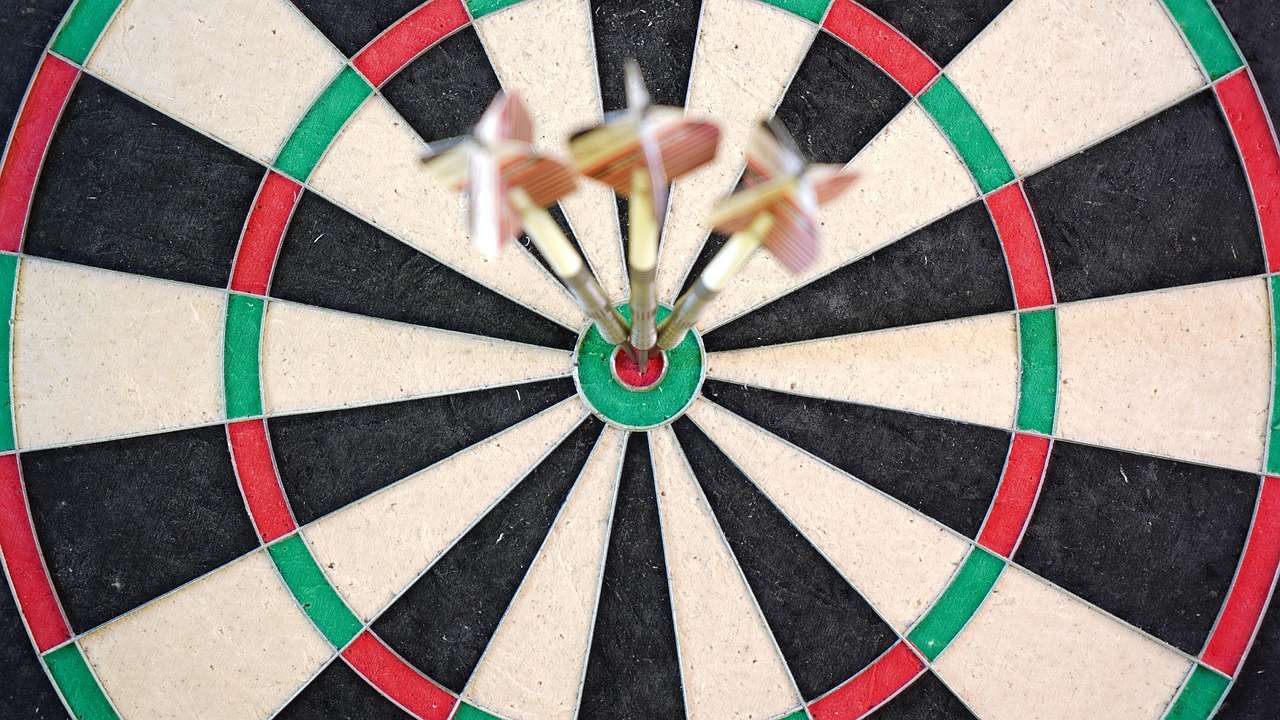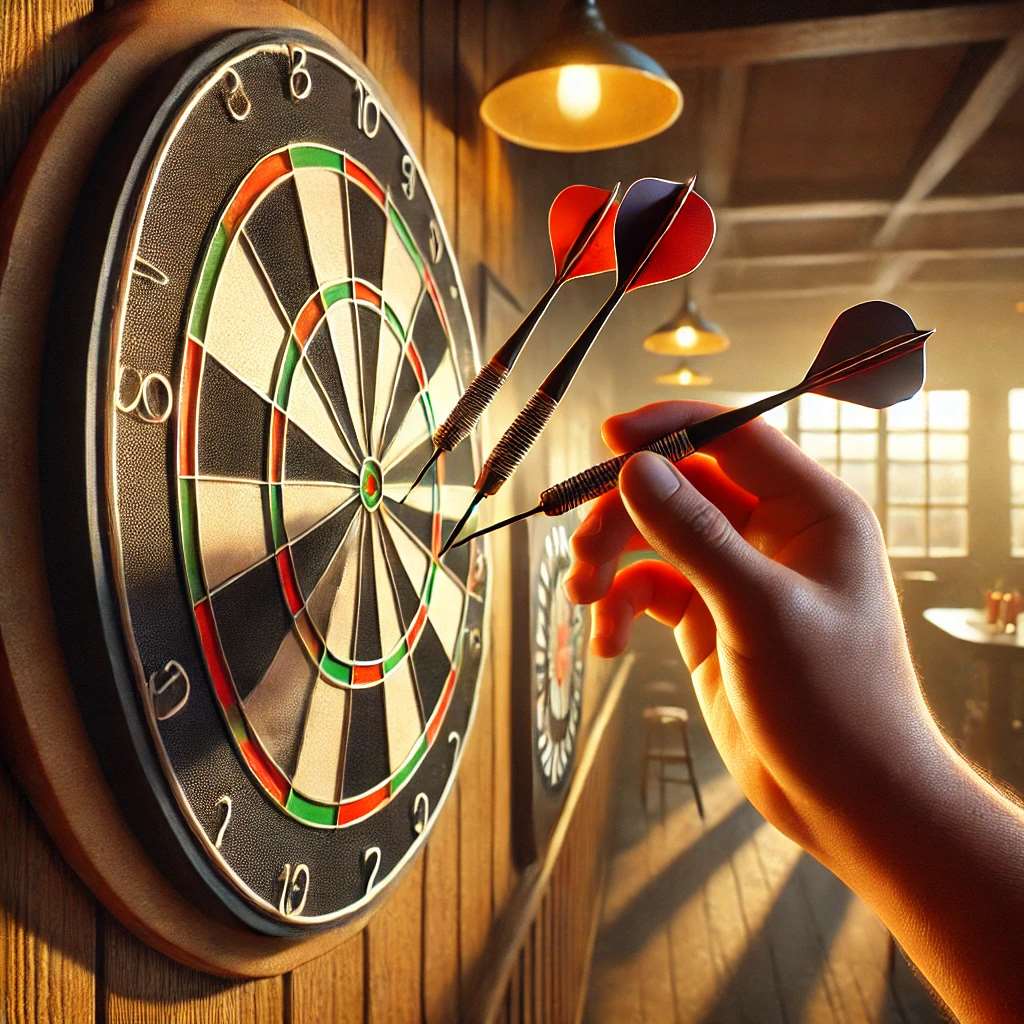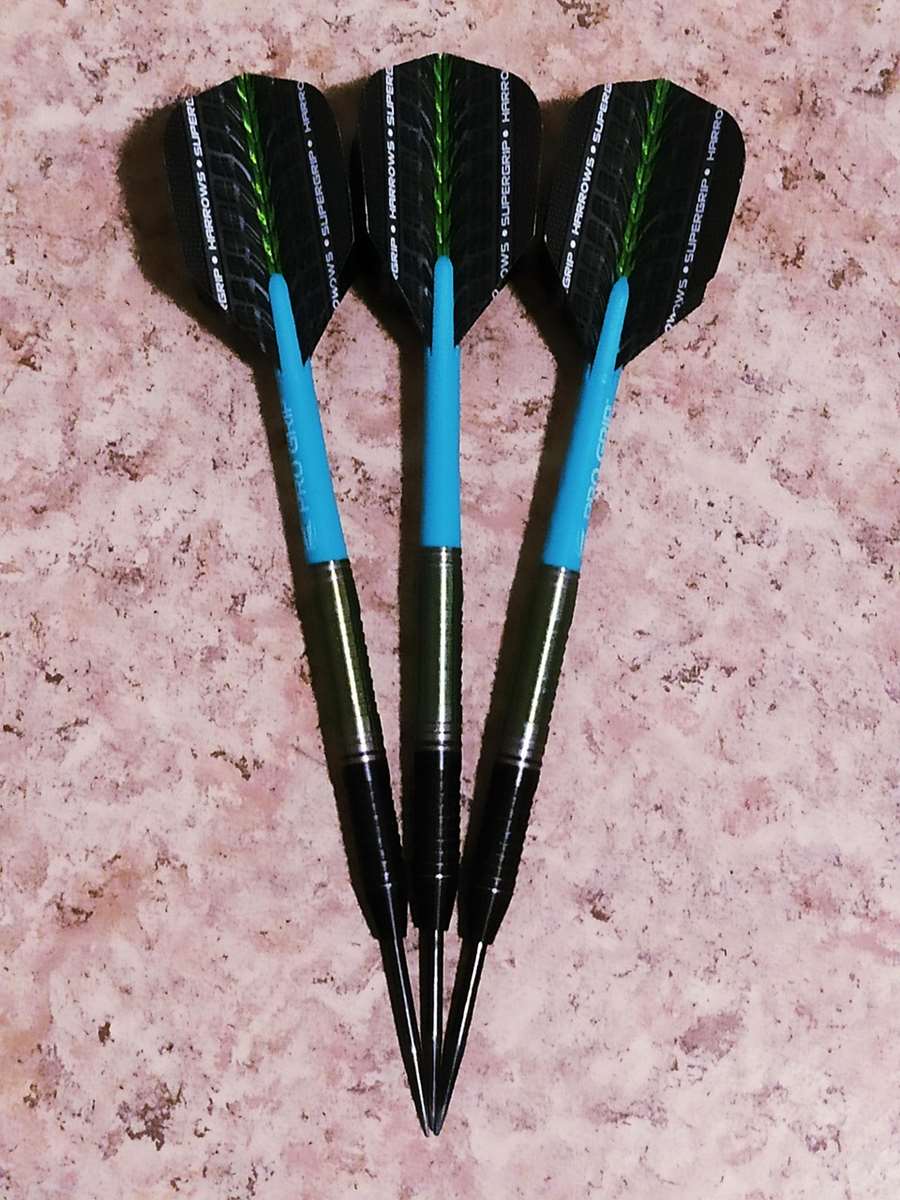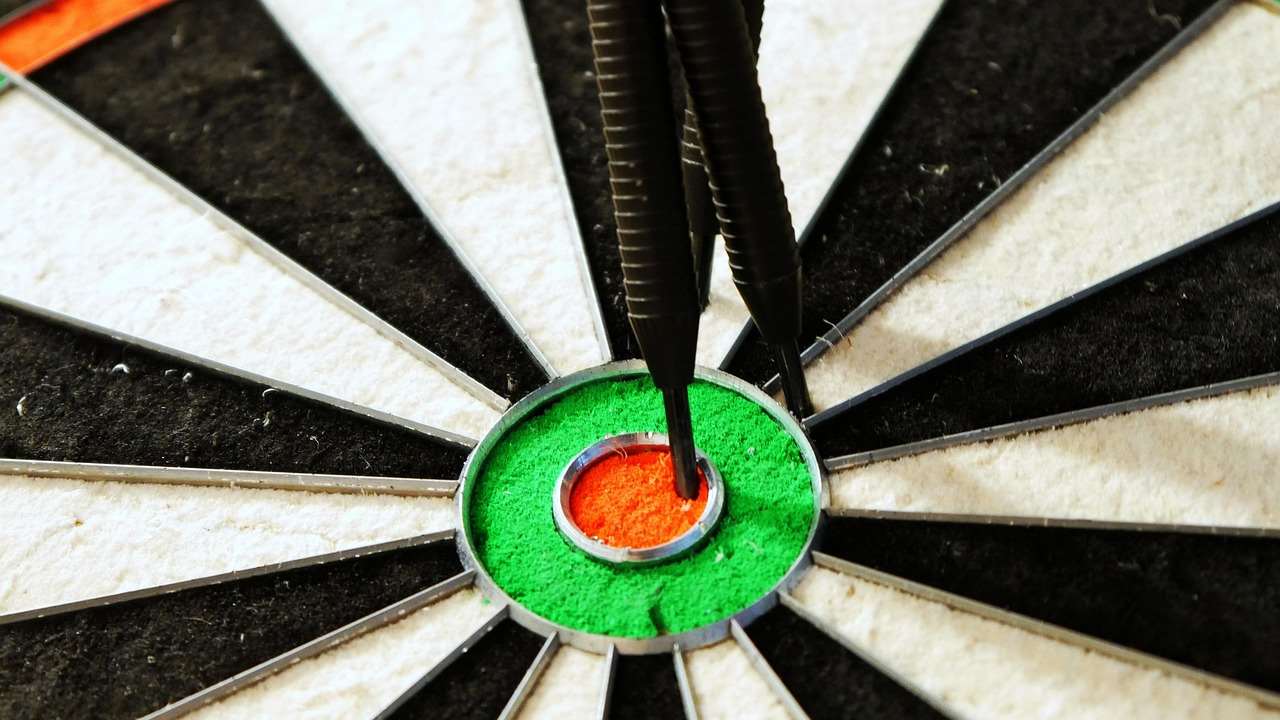Understanding the darts game rules is the first step to enjoying this thrilling and strategic game. This article will cover the fundamental rules, variations, and scoring methods, equipping you to play confidently. We’ll also delve into common mistakes and advanced techniques to help you improve your game.
⚠️ Still Using Pen & Paper (or a Chalkboard)?! ⚠️
Step into the future! The Dart Counter App handles all the scoring, suggests checkouts, and tracks your stats automatically. It's easier than you think!
Try the Smart Dart Counter App FREE!Ready for an upgrade? Click above!
Before we dive into the specifics of the darts game rules, it’s important to understand that the game’s setup is crucial. A standard dartboard is divided into 20 numbered sections, each with a double and a treble ring surrounding the inner bullseye, and an outer bullseye. This precise arrangement is fundamental to the scoring system and adds to the game’s complexity and strategic depth. Proper setup, including the correct distance and lighting, enhances gameplay and ensures fair play. Learning how to effectively utilize this setup will vastly improve your darts game rules knowledge and overall performance.
The basic principle behind darts game rules lies in hitting segments on the board to accumulate points. Each segment is numbered 1-20, with the bullseye (inner and outer) worth 50 and 25 points, respectively. The double and treble rings multiply the segment score by two and three, respectively, offering strategic scoring options. This system forms the backbone of all darts game rules, no matter the specific game variant.

Understanding the Basic Darts Game Rules: 501
The most popular variation is 501, a game played by reducing a starting score of 501 to zero. Players take turns throwing three darts per turn, subtracting their score from their remaining total. A crucial part of darts game rules for 501 is that a player must finish the game by hitting a double—double 20, double 19, etc. This is what adds that edge of strategic thinking to this variant of the darts game rules, as many players have found themselves only one throw away from winning, only to need a specific shot to finish. Failing to hit a double will leave the player with the same score after their throw. This adds tension and excitement to the final stages of the game. A good understanding of darts game rules will teach you the importance of such scoring scenarios. Consider this aspect when you plan your game strategy.
Variations on the 501 Rules
While 501 is the standard, variations exist within the overall framework of darts game rules. Some players may adjust the starting score, or they may modify the finishing requirement; however, the fundamental principles remain the same.
- 301: Same rules as 501, but the starting score is 301.
- 701: Same rules as 501, but the starting score is 701, making it a longer, more challenging game. You can usually find such scoring variations outlined in detailed darts game rules documents within dart leagues.
- Cricket: Instead of a numerical score, Cricket focuses on “closing” numbers (15-20 and the bullseye) by hitting them a certain number of times. This game requires strategic thought-out play, and there are some specific, slightly more complicated darts game rules that surround this version of darts. It is a different method of keeping score, which differs from the numerical scoring methods mentioned earlier.
Understanding these variations will broaden your knowledge of darts game rules and allow you to participate in a wider range of games. For any player who wants to know darts game rules completely, they should explore these variations and get a grasp of the different game dynamics. For example, this will improve your game awareness. You will learn how to spot weak points in your play and where you may need to practice more. This could include working on accuracy when targeting specific numbers.

Advanced Darts Game Rules and Strategies
Beyond the basic rules, mastering strategy significantly improves your gameplay. Knowing the darts game rules is only half the battle; understanding strategy allows you to utilize this knowledge effectively. This section focuses on improving this practical knowledge and applying it effectively. Proper understanding of the darts game rules can significantly affect the probability of winning the game. This can be achieved by improving the player’s ability to take calculated risks that increase the chance of victory. Let’s take a look at a few important techniques.
Developing a Consistent Throw
A consistent throw is crucial in darts. Proper technique, grip, and stance are fundamental. Practicing your throw consistently will improve your accuracy and scores, making you a far more formidable opponent. Many players who have a deep understanding of the darts game rules will also advise on the importance of having a consistent throw. This is because even with excellent knowledge of darts game rules, you need to have good skills to put that knowledge into practice.
Strategic Score Planning
Experienced players plan their shots strategically. Instead of just aiming for the highest scoring areas, consider your remaining score and plan shots that will reliably reduce your score without leaving you in a difficult position to finish. This involves carefully strategizing each throw to leave you in a favourable position to score a double and finish the game. It is through this strategy that the darts game rules are applied in order to increase the probability of winning.
Target Practice
Regular practice is vital to improving your game. Focus on specific areas of the board to enhance your accuracy, and use a variety of games to refine different aspects of your technique. Target practice helps to develop muscle memory and improves your focus and concentration.
A lot of players who are great at darts will tell you that they spend a lot of time practicing. It’s not just about understanding the darts game rules, but also about repeatedly practicing the throwing action until it becomes second nature. This is important because the more muscle memory you have, the less you need to think about the action of throwing the darts, meaning that you have more time to focus on strategy when it comes to the darts game rules. Even seasoned players will continue this form of training to stay sharp.

Understanding Scoring and Keeping Score
Accurately keeping score is vital for fair play. This section describes various methods available and provides tips for accurate scoring. Whether you are using pen and paper, using a Dart game scoring app, or a darts scoring tablet, understanding the darts game rules, as well as the scoring methods, is crucial. There are many different scoring methods available and understanding the specific darts game rules, especially regarding scoring, will improve your efficiency and ensure fair play.
Manual Scoring
Traditional methods involve using pencil and paper, keeping track of each player’s score manually. This method requires careful attention to detail to ensure accuracy. You can usually find templates online that are designed to help with scoring. This method requires concentration to ensure accurate results.
Electronic Scoring
Electronic scoreboards and Dart game scoring apps provide automated scoring, eliminating manual calculation errors. These tools are becoming increasingly popular in leagues and amongst casual players alike.
Using a Dart game scoring app or a darts scoring tablet can make it easier to keep track of the score, particularly when playing longer games or more complex variations. However, even with these advanced tools, it’s crucial to have a good understanding of the darts game rules, especially the nuances of different game variations.

Common Mistakes to Avoid
Knowing the darts game rules is essential, but avoiding common mistakes will further enhance your game. This section focuses on eliminating errors that can hinder progress. Here are some common pitfalls and how to address them.
- Inconsistent Throw: Develop a consistent throwing motion through practice.
- Poor Stance: Maintain a stable and comfortable stance for improved accuracy.
- Ignoring Scoring Strategy: Plan your shots strategically to minimize risk and maximize points.
- Incorrect Dart Selection: Choose darts that suit your grip and throwing style. Consider visiting a flight club darts review website for recommendations, if needed.
- Lack of Practice: Regular practice is essential to improve your skills.
Understanding the darts game rules is crucial, but avoiding these mistakes and practicing regularly will elevate your game significantly. The more you play, the more you’ll learn about the darts game rules and develop your skills. This leads to greater accuracy and overall improved gameplay.

Conclusion
Mastering the darts game rules is a journey, not a destination. By understanding the fundamentals, exploring variations, and practicing consistently, you can improve your skills and enjoy this challenging and rewarding game. Remember to focus on consistent throws, strategic scoring, and avoid common mistakes. Whether you’re a beginner or an experienced player, there’s always room for improvement. So, grab your darts, practice your throw, and get ready to experience the thrill of competitive darts! If you are interested in watching professional darts, you can check out darts masters itv, or maybe check for darts flash scores live if you are interested in keeping track of the scores during the event. For other types of darts, maybe have a look at some rock darts or for apparel, perhaps have a look at the darts match shirts. Happy throwing!
Hi, I’m Dieter, and I created Dartcounter (Dartcounterapp.com). My motivation wasn’t being a darts expert – quite the opposite! When I first started playing, I loved the game but found keeping accurate scores and tracking stats difficult and distracting.
I figured I couldn’t be the only one struggling with this. So, I decided to build a solution: an easy-to-use application that everyone, no matter their experience level, could use to manage scoring effortlessly.
My goal for Dartcounter was simple: let the app handle the numbers – the scoring, the averages, the stats, even checkout suggestions – so players could focus purely on their throw and enjoying the game. It began as a way to solve my own beginner’s problem, and I’m thrilled it has grown into a helpful tool for the wider darts community.